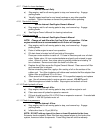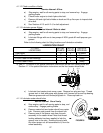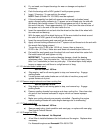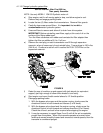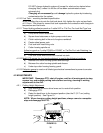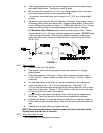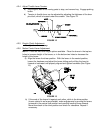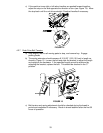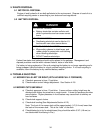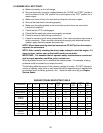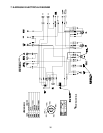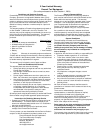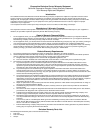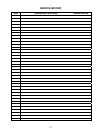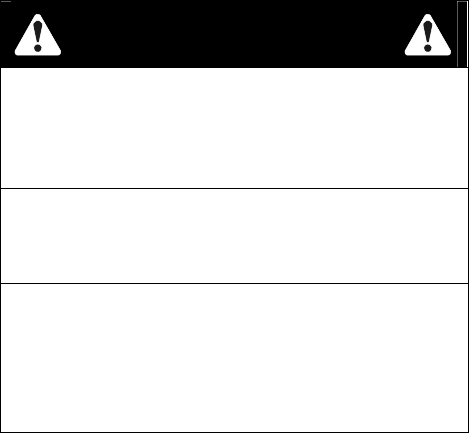
34
5. WASTE DISPOSAL
5.1 MOTOR OIL DISPOSAL
Engine oil and hydraulic oil are both pollutants to the environment. Dispose of used oil at a
certified recycling center or according to your state and local regulations.
5.2 BATTERY DISPOSAL
DANGER
POTENTIAL HAZARD
♦ Battery electrolyte contains sulfuric acid,
which is poisonous and can cause severe
burns
WHAT CAN HAPPEN
♦ Swallowing electrolyte can be fatal or if it
touches skin can cause severe burns.
HOW TO AVOID THE HAZARD
♦ Wear safety glasses to shield eyes, and
rubber gloves to protect skin and clothing
when handling electrolyte.
♦ DO NOT swallow electrolyte.
Federal law states that batteries should not be placed in the garbage. Management and
disposal practices must be within relevant federal, state or local laws.
If a battery is being replaced or if the unit containing the battery is no longer operating and is
being scrapped, take the battery to a local certified recycling center. If no local recycling is
available, return the battery to any certified battery reseller.
6. TROUBLE SHOOTING
6.1 MOWER PULLS LEFT OR RIGHT (WITH LEVERS FULLY FORWARD).
a) Check air pressure in tires; 13 psi/drive.
b) Check motion control linkage adjustment. See Section 4.2.6.
6.2 MOWER CUTS UNEVENLY.
a) Check air pressure in tires; 13 psi/drive. A more uniform cutting height may be
obtained with higher tire pressure on rough terrain. A lower tire pressure provides
more flotation. Higher pressures in front casters may cause them to shimmy on
hard surfaces.
b) Check deck support chains.
c) Check deck leveling
(See Adjustments Section 4.2.2.)
Note: The front of the mower deck will be approximately 1/4” (6.4 mm) lower than
the back of the mower deck. This is the “rake” of the deck.
d) Check blades tip to tip for straightness (they should be within 3/16" (4.8 mm) or
one blade width from being in line.)



